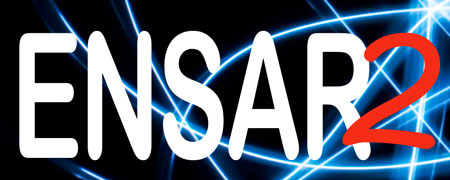Task1 Novel Scintillator Materials. INFN-Milano
In the last 10 years a large number of new high light-yield scintillator materials have been discovered. The firsts and the most famous among them, the Lanthanum Halides, were already the target of an intense R&D activity (also supported within the JRA ENSAR-INDESYS project and the Nupnet GANAS project) which provided the starting point for the design and development of several new highly performing LaBr3:Ce/LaCl3:Ce based detectors array. Some of these new apparatus have already been completed (i.e. HECTOR+), some others are in the construction phase (i.e. PARIS or CALIFA) or in the design phase (Shogun). Since few months a large number of different new promising scintillators are commercially available, in small volumes, as CeBr3, CLYC or GAGG and some others, as GYGAG:Ce, CLLB, CLLC, will be available in the near future.In addition, it has been recently discovered that co-doping inorganic scintillators might have the effect of increase the crystal proportionality thus significantly improving the energy resolution. It has been reported that a small sample of LaBr3:Ce co-Doped with Sr+ provided an energy resolution of 2% (13 keV) at 662 keV instead of the typical 2.8%. In the case of CeBr3, which features an energy resolution slightly worst than that of LaBr3:Ce but has no internal activity, with a Ca+ co-doping it was measured an energy resolution of 3% at 662 keV instead of the standard value of 4%. In general, with the co-doping, an improvement between 20 to 30% in the energy resolution is expected. Furthermore, the co-doping can as well strongly improve the mechanical stability and robustness of the crystals, thus allowing the possibility to grow large volume optics, which is an important issue for detection efficiency. The CLYC scintillators, available in very small samples since only 2013, have an energy resolution slightly lower than 5% at 662 keV and provide the unique feature to identify fast and thermal neutrons. As a matter of fact, a 1 cm thick sample of CLYC (enriched with 6Li) provides approximately 80% efficiency for thermal neutron detection and an excellent (similar or even better than 3He) Pulse Shape Discrimination between neutrons and gamma-rays. In addition, thanks to 35Cl nuclei, CLYC scintillator can measure the kinetic energy of fast neutrons directly through the signal pulse height amplitude. As time resolution is expected to be below 1 ns, CLYC has feature, unique among inorganic scintillators, to identify neutrons and measure their kinetic energy using both the pulse height and Time Of Flight technique. The CLLB, CLLC and the GYGAG:Ce scintillators, which are not yet commonly available but will be in the near future, are expected to have performances at least comparable to LaBr3:Ce or CLYC. The GYGAG:Ce for example is an oxide ceramic, thus offering the advantages in terms of chemical stability and robustness that a ceramic can offer with respect to an inorganic crystal; potentially it can be produced at any shape and volume. The technological development in material science has produced scintillators that 15 years ago could not be even dreamed on. The rate of discovery is impressive, especially in these last years, and new breakthroughs in scintillator technology are likely to happen. Therefore new highly performing scintillator detectors with unexpected features could be discovered and available for R&D in the near years. It is therefore crucial that all these scintillators and their unique detection features should be accurately studied. A deep knowledge of their performances and of the most proper way to use them represents the necessary basis for the development of future gamma and radiation detectors or applications. The groups involved in WP2 have a consolidated experience in detector design and R&D activity in scintillator detectors. Their joint efforts in the accurate test of new scintillator materials will provide the basis of know-how and knowledge for the design of future detector arrays. All these brand new scintillator detectors need an intense R&D activity to be fully understood and characterized. In fact, in one or two years the very first 'large' volume CLYC or CLLB or co-doped detectors will be available. In addition, all these high light yield crystals could potentially provide good position sensitivity within continuous crystals (as LaBr3:Ce). This feature could be used to reduce the Doppler Broadening effect in basic research and be extremely useful in several fields of applications as for example in homeland security, medical-imaging or radiotherapy. A consolidated knowledge of detector materials and detection techniques in European laboratories and Universities is the basis for the usage and the dissemination of such technologies.



